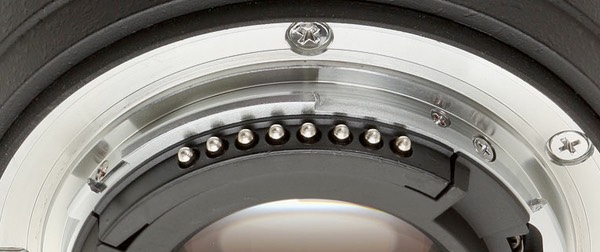An AF-S lens for the F-mount can have as many as ten contacts. Seven of these were defined back with the original Nikon autofocus system introduced with the Nikon N2020 (F501) camera in 1986.
Looking at the back of the lens and working counterclockwise from the right:

- VCC (power)
- RW or H/S (read/write) (becomes RW1 if teleconverter is used)
- LCLK (serial clock) (becomes LCLK1 if teleconverter is used)
- LIO (serial data) (becomes LIO1 if teleconverter is used)
- (teleconverter use) RW2
- (AF-S use) LBAT
- PGND (ground)
- (AF-S use) PGND (ground)
- (teleconverter use) LCLK2 (serial clock)
- (teleconverter use) LIO2 (serial data)
The odd teleconverter extra (all the "2") signals allow the lens to talk simply through the teleconverter. The teleconverter only responds to the lens with a 1.25, 1.4, 1.6, 1.7, or 2x value, which the lens then processes and alters the focal length and aperture parameters in communicating with the camera on the main signals ("1" signals).
The full AF-S focusing protocol is described in US patent 5727241.
